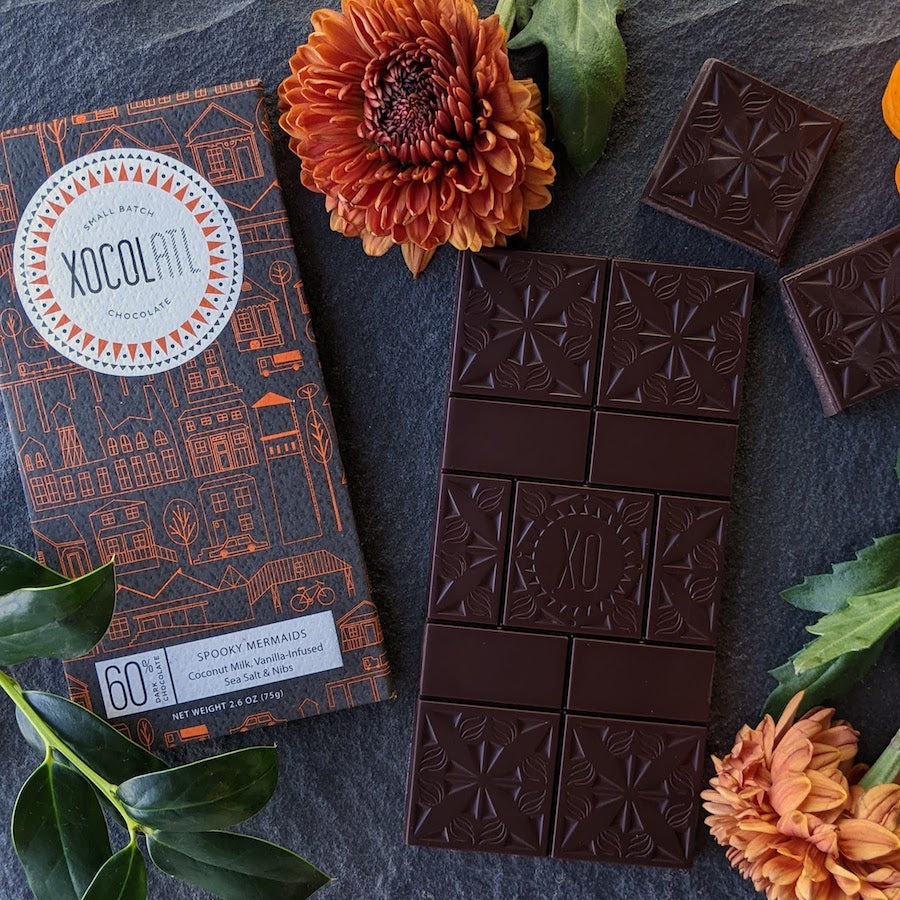
We don’t think you should buy chocolate for trick or treaters.
If you stock up on Halloween candy, you know those big bags of fun-size bars look like great deals. And while we built this company with a mission to bring joy to our customers, we have to occasionally pull back the curtains to reveal some of the lesser known, unpleasant truths about the chocolate industry; namely, that behind those low prices is a supply chain that too frequently relies on child labor to keep costs down.
The companies that churn out mass-produced chocolate can offer Halloween candy at rock-bottom prices because the laborers in their supply chains often receive poverty wages & children, sadly, are lured into the mix. In West Africa, where roughly 70% of the world's cacao is grown, an estimated 1.5 million kids work in hazardous conditions on cacao farms - exposed to dangerous pesticides, working with sharp tools, carrying heavy loads & missing out on education. Many work for little or no pay & some are victims of trafficking. So what can a conscious consumer do? I’m glad you asked.
Educate Yourself and Others
Look, forced child labor and inequities in supply chains are heavy topics—we get it. But if the idea of sending children you love out to collect candy that was in some way processed by other children who were forced, tricked, or had few other options than to start laboring in cacao fields makes you feel like someone’s trying to dupe you, it’s because corporations are.
I recommend watching The Chocolate War Film, a documentary following human rights lawyer, Terry Collingsworth, as he works to expose the everyday practice of child labor on cacao plantations, bringing a lawsuit to the US Supreme Court against Nestle and Cargill on behalf of former child laborers, now adults. The documentary is available to rent on Amazon for $4.99 and is available on Apple TV. While the topic of the 80 minute documentary is not light, the insight you’ll gain into how mass-produced chocolate is really sourced will leave you feeling empowered in your knowledge of what is actually going on.
Back in 2020, we were honored to be asked to submit a letter to the US Supreme Court on behalf of the plaintiffs, stating emphatically that it is NOT an operational necessity to have children in cacao supply chains in order to make chocolate that the market will support. If you’ve bought our chocolate before, you’re our proof that there is a demand for chocolate that is made with conscience.
Credit: The Chocolate War
Watch Out for Mission-Washing
Some big brands build their marketing around fighting child labor while sourcing from the same opaque West African supply chains where full transparency isn't truly possible. Tony's Chocolonely, for example, emphasizes their ethical bonafides in all of their marketing, however, buried on page 37 of their own "2023/2024 Annual Fair Report" they reveal that they pay just above market rate for their West African cocoa and that "80.9% of cocoa farmers at our longest-term partner cooperatives are not yet crossing the living income benchmark...". If you want to dig in more, we highly recommend you check out the film above.
What to Look For When Buying Chocolate
Bean-to-bar makers are still your best bet. These makers (like us) intentionally search for cacao with unique flavor profiles, so they need to know exactly where every bean comes from.
Look for makers practicing direct trade, where farmers set their own prices instead of being at the mercy of commodity markets. This model sets an even higher standard than fair trade certification.
Transparency is non-negotiable. The right chocolate makers will tell you the specific farms or cooperatives they source from either on their products or their website. This cacao is much more expensive than non-traceable cacao bought off commodities traders, so believe me—if the maker has invested the time, money and values into transparency, they’ll make sure you know about it in their marketing materials! If they won't tell you, that’s a clear red flag. Read more about our own sourcing model here.
And yes, more expensive price points. Ethical chocolate costs more for all of the above reasons. Fair wages, safe conditions & exploitation-free supply chains are not cheap, but when consumers prove they are willing to pay the higher price of clean chocolate, they’re not only supporting an alternative model (sustainable, conscionable, humane) to the one corporations like Nestle and Cargill follow, they’re also showing that those companies’ claims—that low cost labor is necessary and inevitable—are hollow.
So What About The Trick or Treaters?
We certainly don’t hand out $11 chocolate bars to every ghost and superhero that shows up at our door and we don’t expect anyone else to either! If you host several dozen little munchkins on your doorstep every October 31st, we hope you’ll consider chocolate-free candy for the kids, while splurging on yourself after the last door knock fades.

